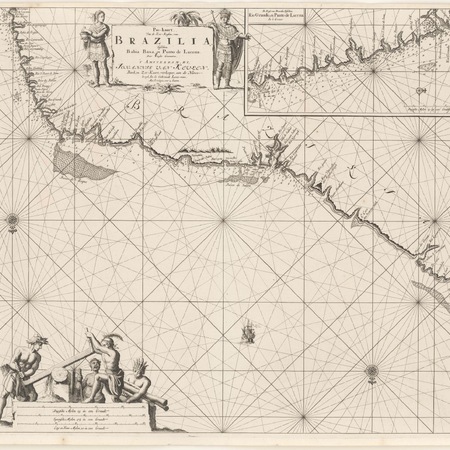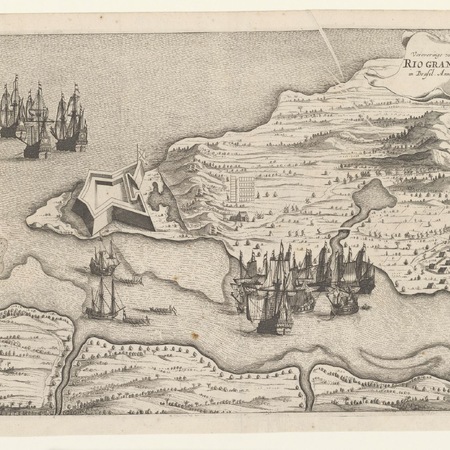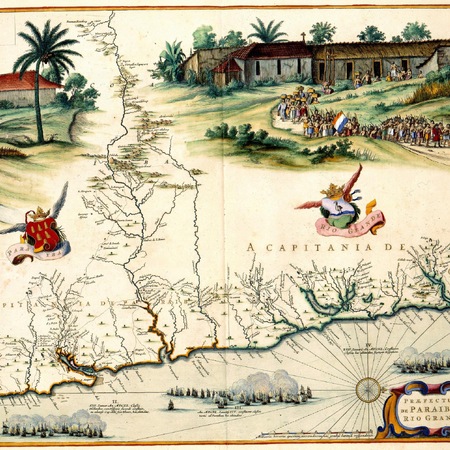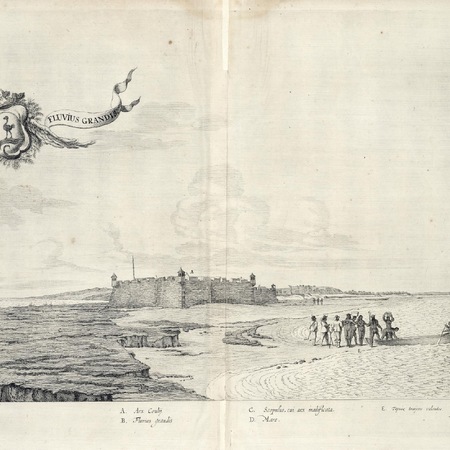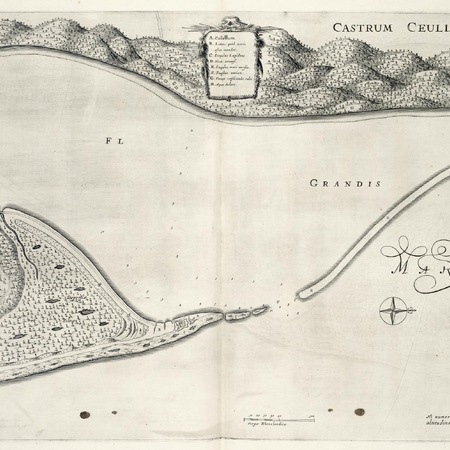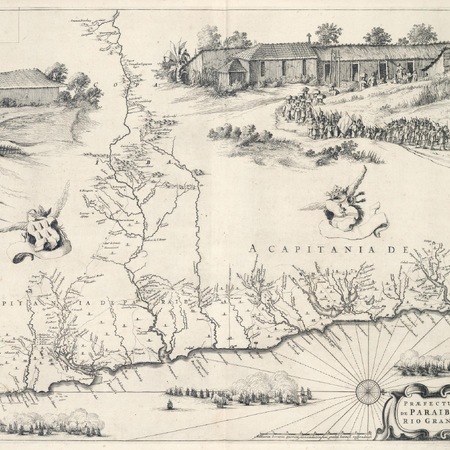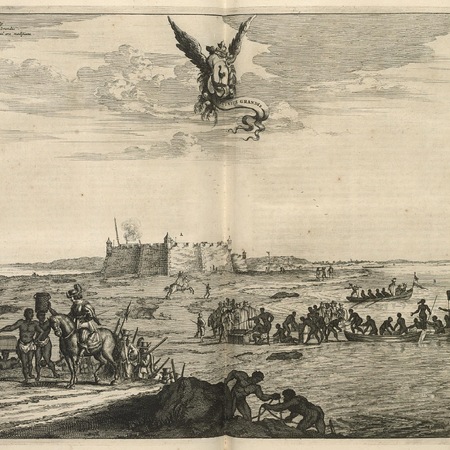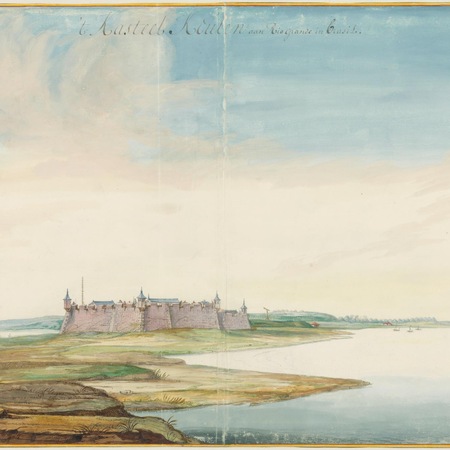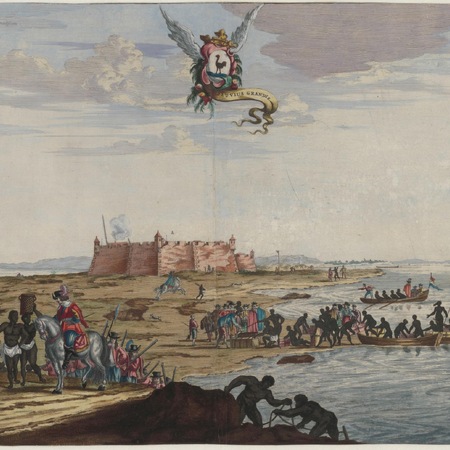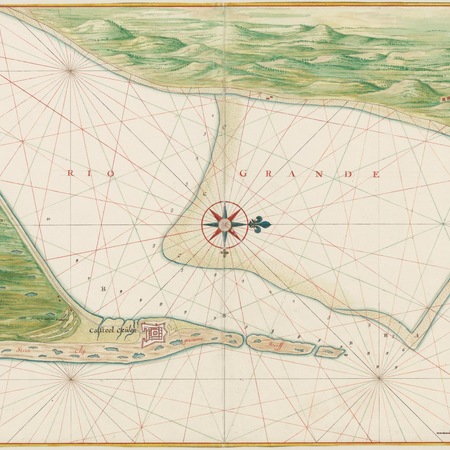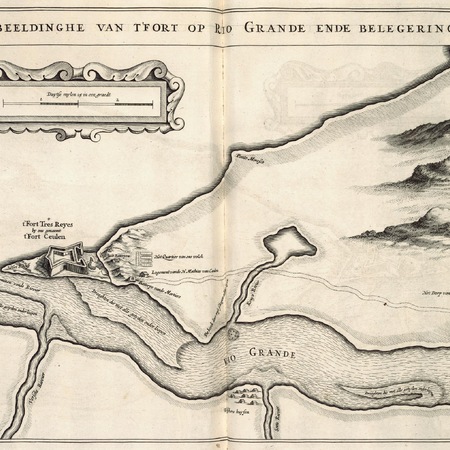Dussen described the fort in his report from December 1639 that was published by Barlaeus as being built of stone and having high walls. On the landside it had two half bulwarks with oreillons and casemates in the old fashioned style, but the curtains and the bulwarks were cramped and small.
The other sides have no flanks. It was constructed near the sea, beyond the dunes on the reef, a musket shot from the bar. A rifle shot distant there are dunes as tall or almost as tall as the fort, thus dominating the passages along the walls of the castle. Traverses were constructed along the walls to prevent these from receiving fire. This Castle has 10 pieces of bronze: 4 of 12 lbs, 1 of 10 lbs, 3 of 8 lbs, 1 of 7 lbs and 1 of 3 lbs, furthermore 16 pieces of iron: 1 of 6 lbs, 4 of 4 lbs, 7 of 3 lbs and 4 of 2 lbs in the casemates, 1 of 4 lbs and 2 of 3 lbs within the fore gate, all Spanish (Barlaeus 1923: 182). The report of Hamel, Bullestraten and Bas from 1646 describes the fort as having two bulwarks in the manner of hornworks with two casemates and having a protruding tenaille. ‘The two other sides are curved to the inside in the manner of a tenaille, so that everything can be flanked in a reasonable way. One of the long sides facing the sea is in a bad way, but the Lord Directors have chosen to decline the proposal to repair it. For the rest the fort is well provided with quarters, an ammunition house and the following artillery.’
The garrison abandoned the fort in 1654 after the news of the rendition of Recife reached them and sailed to the Netherlands on a ship they had kept for that purpose by way of the Caribbean. The empty fort was occupied by Portuguese under the command of Colonel Francisco de Figueiroa.
